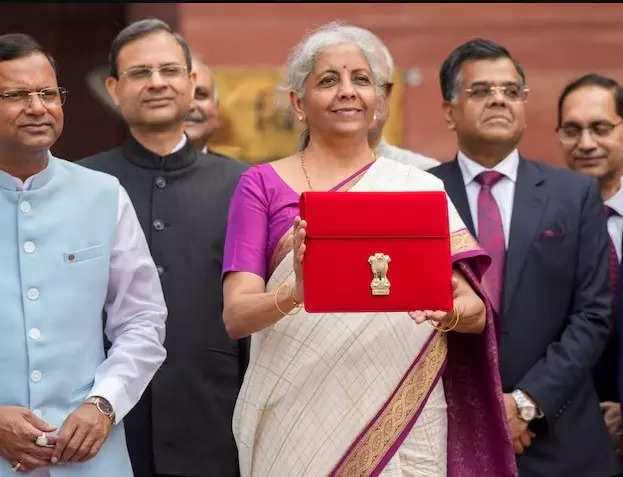
Union Budget 2024-25: With a focus on nine key areas, Finance Minister Nirmala Sitharaman announced the Union Budget 2024-25 on Tuesday. While there are no direct policy changes announced in the Union Budget, a few indirect provisions are keeping the mobility industry hopeful.
The government will spend INR 11.11 lakh crore on infrastructure in the ongoing financial year. The spending plan remains unchanged from when it was announced in the interim budget presented in February.
Rural could drive entry-level vehicle sales
The government has allocated INR 2.66 lakh crore for rural development including rural infrastructure. A provision of INR 1.52 lakh crore for agriculture and allied sectors has also been made.
Manish Raj Singhania, President, FADA believes if the monsoon turns out to be good, then with this kind of fund flowing we should expect a good festive season this year. “Urban and semi-urban sector is performing well for the auto industry, and there was a push needed on the rural side. The announcements in the budget could be a boost for the entry level cars, two wheelers and small commercial vehicles,” he said, adding that the recent hike in MSPs will add to the positives.
As per the Budget, rural land related actions will include assignment of Unique Land Parcel Identification Number (ULPIN) or Bhu-Aadhaar for all lands, digitization of cadastral maps, survey of map subdivisions as per current ownership, establishment of land registry, and linking to the farmers registry. These actions will also facilitate credit flow and other agricultural services.
Vinod Aggarwal, President, Society of Indian Automobile Manufacturers (SIAM) said the budget could have a multiplier effect on the economy as well as the auto sector.
One of our requests to the FM was an allocation for rural development. So this is a welcome step, and there is some renewed focus on the Pradhan Malik Grameen Sadak Yojana as well.
Rajeev Singh, Partner and Consumer Industry leader, Deloitte Asia Pacific said, “Overall, the budget appears to be growth oriented with special focus on two big issues – reviving the rural market and employment generation.”
Potential boost for EVs
FM stated that a Critical Mineral Mission for domestic production, recycling of critical minerals, and overseas acquisition of critical mineral assets will be provisioned. Its mandate will include technology development, skilled workforce, extended producer responsibility framework, and a suitable financing mechanism.
Minerals such as lithium, copper, cobalt and rare earth elements are critical for sectors like nuclear energy, renewable energy, space, defense, telecommunications, and high-tech electronics. I propose to fully exempt customs duties on 25 critical minerals and reduce BCD on two of them. This will provide a major fillip to the processing and refining of such minerals and help secure their availability for these strategic and important sectors, Sitharaman said in her speech.
Shradha Suri Marwah, President, ACMA India said a reduction in customs duty to nil on critical minerals such as lithium, copper, cobalt, nickel etc. will encourage cell manufacturing in the country and add to the evolving EV ecosystem in the country.
“We were also looking at any statement when it comes to EVs in particular, which we could not hear. There was surely a mention about green energy and a taxonomy to be developed for this green transformation, I think we should wait for more details,” said Santosh Iyer, MD and CEO, Mercedes-Benz India
He believes that the Government is working on that front, and “enablers” like the duty reduction on rare earth minerals are “welcome”. He also added that “we need much bigger steps as well when it comes to commitment from the government that we will continue this path of electrification”.
MSMEs turn up to be a gainer
Government has announced a credit guarantee scheme to help manufacturing-focussed medium and small enterprises (MSMEs) in buying their machinery without offering collateral.
Positive about the growth prospects of the manufacturing sector, Shradha Suri Marwah, President ACMA & CMD Subros stated that a focus on strengthening MSMEs through Credit Guarantee scheme and credit support during the stress period are steps in the right direction. “Nearly two-third of ACMA members are MSMEs,” she added.
For N K Minda, CMD, Uno Minda, a big highlight in the budget was a focus on localisation and MSMEs.
Jobs and skilling
FM also said there will be a scheme to provide internship opportunities in 500 top companies to 1 crore youth in 5 years. Internship allowances of INR 5000 per month with one time assistance of INR 6000 will be given. For this, respective companies will bear the training and 10% internship cost from CSR fund.
Government has also doubled the upper limit of Mudra loans to INR 20 lakh from the current INR 10 lakh for entrepreneurs who have availed and successfully repaid previous loans under the ‘Tarun category’.
Automobile dealerships in India employ 40 lakh people directly. “Employment schemes for youth are encouraging. The update on Mudra loans is a positive step for dealers, especially the EV dealership community,” Singhania said.
Marwah was particularly excited about the encouragement for women in the workforce and skilling. “The more diverse the workforce, the more innovative we will be.”
Minda stated that the employment initiatives and incentives for women are a good initiative and should prove positive for the entire industry.
Benefit for startup investors
In her budget speech, FM announced that the angel tax will be abolished for all investors. With an aim to curb the use of unaccounted money through the subscription of shares in closely held companies at inflated valuations, the Angel tax was introduced in 2012.
Industry experts suggest that abolishing angel tax for all classes of investors in startups would be helpful in bolstering the Indian startup ecosystem in innovative mobility solutions.
According to Marwah, this is a positive move as lines are blurring between technology and mobility in the auto sector. “Innovation is coming from various areas, and one of them is startups. In ACMA, we actually started a pillar for startups, because there is so much traction over there.”
Unmet expectations
Santosh Iyer, MD and CEO, Mercedes-Benz India said he was happy about the policy continuity as it helps in long-term planning. “While there was no major announcement on EVs, initiatives on the transition to green energy were in the positive direction.
While SIAM President seemed positive, he added that specific announcements around EV incentives and vehicle scrappage would have been helpful for the industry.
A specific allocation for R&D spending or tax incentive in innovation was a miss, Ashim Sharma, Senior Partner, NRI (Nomura Research Institute) said.
With the demand for hybrid vehicles on a rise during the past months, Saurabh Agarwal, Partner, EY India felt a reduction on cess could have been reduced for hybrids, as it is a choice of transition towards EVs.
There is no concessional corporate tax rate, so that incentive on manufacturing is missing, he added.
Arnab Banerjee, Chairman Automotive Tyre Manufacturers Association (ATMA) said the industry was looking forward to reduction in customs duty on natural rubber which is the highest in the world and which unfortunately has not been addressed.
However, the proposal of a comprehensive review of the rate structure over the next six months to rationalize and simplify it for ease of trade and removal of duty inversion provides major solace to the industry, he said.
Bal Malkit Singh, Chairman – Core Committee & Former President, All India Motor Transport Congress (AIMTC) is quite disappointed with the budget announcements.
“The macro-objects of infrastructure & tourism development in Odisha and Bihar is the only solace for our brethren from the passenger transport sector. The viability of this sector is increasingly threatened by multiple taxation, rampant corruption, and rising input costs such as diesel, tolls, third-party insurance, and tyre prices,” he said.
What is also expected in the industry is clarity on long term capital gains tax calculation on real estate, because that is a “big sector” for carmakers, especially for the luxury vehicle makers. While on one hand, it has been brought down from 20 to 12.5%, on the other hand, the indexation benefit has been removed, Iyer added.

















